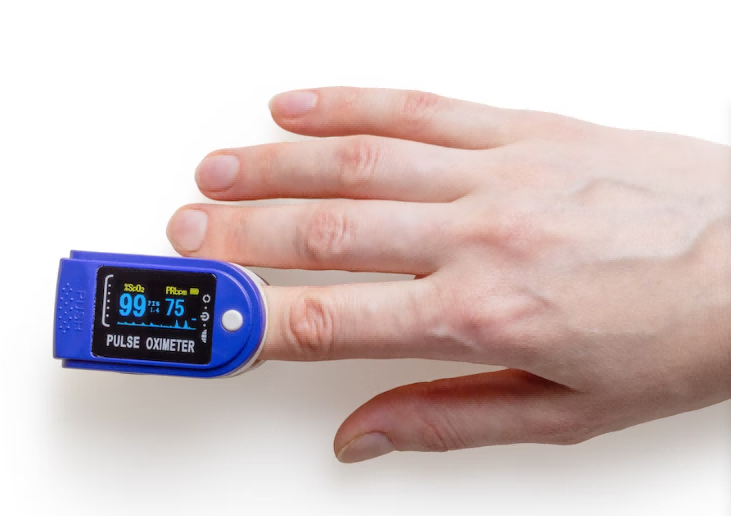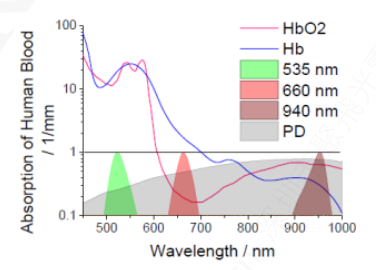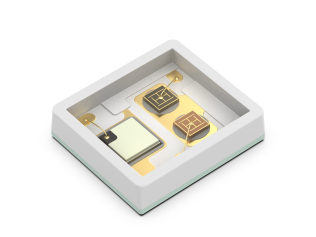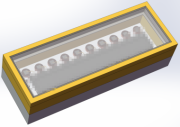

2023-01-03
The development of equipment and technology brings convenience to people's life. Speaking of useful devices, The development of equipment and technology brings convenience to people's life. Speaking of useful devices, pulse oximetry and LIDAR must be mentioned. Pulse oximetry is a noninvasive device used to measure the oxygen level of the blood, which is easy to operate by clipping this equipment onto a patient's finger. LIDAR (Light Detection and Ranging), an optical technology, is a key method for distance sensing for autonomous vehicles. It can also apply to the geographical survey, river bed elevation, and the density of forests and hills. Despite different features, they share one thing in common: they rely on the help of infrared LED that emits infrared light invisible to the naked eye.

(Copyright photo from https://unsplash.com/photos/-msTEzGwKJs)
How Do Pulse Oximetry and LIDAR Work With Infrared LED
1. Pulse Oximetry
The pulse oximetry consists of light-emitting diodes (LEDs), a LED with a wavelength of 660 nm, and an infrared LED with a wavelength of 940 nm. Absorbing light at the two works differently. Oxyhemoglobin in the blood mainly absorbs infrared light with wavelengths ranging from 850 nm to 1000nm, while deoxyhemoglobin mainly absorbs red light at 600 nm to 750nm. The pulse oximetry is designed to based on the principle that deoxyhemoglobin at 660nm has higher absorption, and oxyhemoglobin at 940nm has a higher absorption. Then the value of the reflected light intensity collected is converted to that of the oxygen level of the blood.

2. LIDAR
A laser, a scanner, a specialized GPS receiver, and IMU (inertial measurement unit) are the four main components of a LIDAR system. The LIDAR technology uses infrared LED to deliver light pause and receive the reflected light to measure distances to a target. It captures millions of precise distance measurement points each second, producing a 3D matrix of its environment. Thanks to the help of LIDAR, objects' position, shape, and behavior can be obtained from the comprehensive mapping of the environment.
Refond's IR LED Solutions for Pulse Oximetry and LIDAR
Refond is cognizant of the increasing demand for IR LED circuits for pulse oximetry and LIDAR. Thus, we introduced advanced infrared LED solutions to solve the pain points of industrial applications and meet the requirements of different application scenarios. Here are the infrared LED solutions offered by us.
1. Blood Oxygen Sensing Series
The right components, especially infrared LED, are integral to ensure the measurement of the oxygen content of the blood. If the LED driver circuit has noise near DC coupled with nonlinearity, it will impact the LED brightness, thereby affecting the measurement accuracy of the oxygen level of the blood. Our IR LED for blood oxygen sensing series solve pain points that industries have long encountered; it can easily detect light signal at a wavelength of 940 nm and 660 nm, being a reliable option for pulse oximetry.

2. LIDAR(CLCC series)
Our infrared LED for LIDAR system boasts the following advantages that make it stand out among its other counterparts.
l Feature with hardware filtering and dragging point, which can effectively avoid interference caused by some noise points.
e="margin-left:21pt; text-align:justify;" > l Synchronously output the target object reflection intensity, which can be used for algorithm measurement.
l Ranging accuracy of being equal to or greater than 30mm.
l Excellent linear characteristics of different objects.
l No interference between the radars when the multiple radars operate at the same time.
l Special optical design, which can effectively improve the anti-dirt performance.

Refond's Outlook on Future
Our IR LED strip has the edge regarding professional packaging capabilities, high power density, and custom chips. In the future, Refond will remain true to our original aspiration, bringing innovative technology to enrich human life. Meanwhile, we will integrate global resources and technology to develop state-of-the-art infrared LED solutions. For example, advanced proximity light sensors ad UV sensors will be introduced in the foreseeable future. Stay tuned!